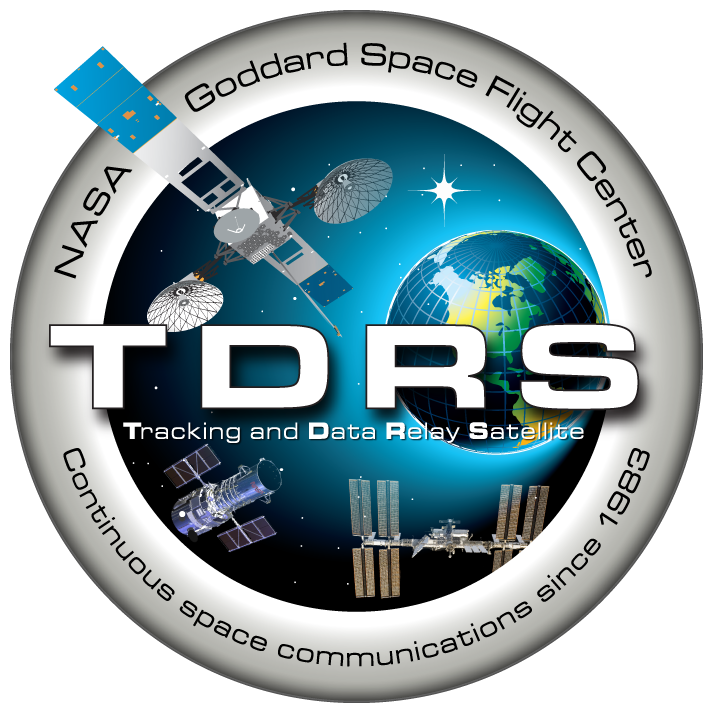|
XTE J1118 480
The Rossi X-ray Timing Explorer (RXTE) was a NASA satellite that observed the time variation of astronomical X-ray sources, named after physicist Bruno Rossi. The RXTE had three instruments — an All-Sky Monitor, the High-Energy X-ray Timing Experiment (HEXTE) and the Proportional Counter Array. The RXTE observed X-rays from black holes, neutron stars, X-ray pulsars and X-ray bursts. It was funded as part of the Explorer program and was also called Explorer 69. RXTE had a mass of and was launched from Cape Canaveral on 30 December 1995, at 13:48:00 UTC, on a Delta II launch vehicle. Its International Designator is 1995-074A. Mission The X-Ray Timing Explorer (XTE) mission has the primary objective to study the temporal and broad-band spectral phenomena associated with stellar and galactic systems containing compact objects in the energy range 2--200 KeV and in time scales from microseconds to years. The scientific instruments consists of two pointed instruments, the Pr ... [...More Info...] [...Related Items...] OR: [Wikipedia] [Google] [Baidu] |
Space Observatory
A space telescope (also known as space observatory) is a telescope in outer space used to observe astronomical objects. Suggested by Lyman Spitzer in 1946, the first operational telescopes were the American Orbiting Astronomical Observatory, OAO-2 launched in 1968, and the Soviet Orion (space telescope), Orion 1 ultraviolet telescope aboard space station Salyut 1 in 1971. Space telescopes avoid several problems caused by the atmosphere, including the absorption or scattering of certain wavelengths of light, obstruction by clouds, and distortions due to atmospheric refraction such as twinkling. Space telescopes can also observe dim objects during the daytime, and they avoid light pollution which Observatory#Ground-based observatories, ground-based observatories encounter. They are divided into two types: Satellites which map the entire sky (astronomical survey), and satellites which focus on selected astronomical objects or parts of the sky and beyond. Space telescopes are distinct ... [...More Info...] [...Related Items...] OR: [Wikipedia] [Google] [Baidu] |
X-ray Pulsars
X-ray pulsars or accretion-powered pulsars are a class of astronomical objects that are X-ray sources displaying strict periodic variations in X-ray intensity. The X-ray periods range from as little as a fraction of a second to as much as several minutes. Characteristics An X-ray pulsar is a type of binary star system consisting of a typical star (stellar companion) in orbit around a magnetized neutron star. The magnetic field strength at the surface of the neutron star is typically about 108 Tesla, over a trillion times stronger than the strength of the magnetic field measured at the surface of the Earth (60 μT). Gas is accreted from the stellar companion and is channeled by the neutron star's magnetic field on to the magnetic poles producing two or more localized X-ray hot spots, similar to the two auroral zones on Earth, but far hotter. At these hotspots the infalling gas can reach half the speed of light before it impacts the neutron star surface. So much gravitational po ... [...More Info...] [...Related Items...] OR: [Wikipedia] [Google] [Baidu] |
Massachusetts Institute Of Technology
The Massachusetts Institute of Technology (MIT) is a Private university, private research university in Cambridge, Massachusetts, United States. Established in 1861, MIT has played a significant role in the development of many areas of modern technology and science. In response to the increasing Technological and industrial history of the United States, industrialization of the United States, William Barton Rogers organized a school in Boston to create "useful knowledge." Initially funded by a land-grant universities, federal land grant, the institute adopted a Polytechnic, polytechnic model that stressed laboratory instruction in applied science and engineering. MIT moved from Boston to Cambridge in 1916 and grew rapidly through collaboration with private industry, military branches, and new federal basic research agencies, the formation of which was influenced by MIT faculty like Vannevar Bush. In the late twentieth century, MIT became a leading center for research in compu ... [...More Info...] [...Related Items...] OR: [Wikipedia] [Google] [Baidu] |
Crab (unit)
A Crab is a standard astrophotometrical unit for measurement of the intensity of Astrophysical X-ray sources. One Crab is defined as the intensity of the Crab Nebula at the corresponding X-ray photon energy. The Crab Nebula, and the Crab Pulsar within it, is an intense space X-ray source. It is used as a standard candle in the calibration procedure of X-ray instruments in space. However, because of the Crab Nebula's variable intensity at different X-ray energies, conversion of the Crab to another units depends on the X-ray energy range of interest. In the photon energy range from 2 to 10 keV, 1 Crab equals 2.4 · 10−8 erg cm−2 s−1 = 15 keV cm−2 s−1 = 2.4 · 10−11 W m−2. For energies greater than ~30 keV, the Crab Nebula becomes unsuitable for calibration purposes, as its flux can no longer be characterized by a single coherent model. The unit ''mCrab'', or ''milli ''Milli'' (symbol m) is a unit prefix in the metric system denoting a factor of one thousandth ... [...More Info...] [...Related Items...] OR: [Wikipedia] [Google] [Baidu] |
Xenon
Xenon is a chemical element; it has symbol Xe and atomic number 54. It is a dense, colorless, odorless noble gas found in Earth's atmosphere in trace amounts. Although generally unreactive, it can undergo a few chemical reactions such as the formation of xenon hexafluoroplatinate, the first noble gas compound to be synthesized. Xenon is used in flash lamps and arc lamps, and as a general anesthetic. The first excimer laser design used a xenon dimer molecule (Xe2) as the lasing medium, and the earliest laser designs used xenon flash lamps as pumps. Xenon is also used to search for hypothetical weakly interacting massive particles and as a propellant for ion thrusters in spacecraft. Naturally occurring xenon consists of seven stable isotopes and two long-lived radioactive isotopes. More than 40 unstable xenon isotopes undergo radioactive decay, and the isotope ratios of xenon are an important tool for studying the early history of the Solar System. Radioactive xe ... [...More Info...] [...Related Items...] OR: [Wikipedia] [Google] [Baidu] |
Crab Nebula
The Crab Nebula (catalogue designations M1, NGC 1952, Taurus A) is a supernova remnant and pulsar wind nebula in the constellation of Taurus (constellation), Taurus. The common name comes from a drawing that somewhat resembled a crab with arms produced by William Parsons, 3rd Earl of Rosse, in 1842 or 1843 using a telescope. The nebula was discovered by English astronomer John Bevis in 1731. It corresponds with SN 1054, a bright supernova observed in 1054 C.E. by Native American, Japanese, and Arabic stargazers; this supernova was also recorded by Chinese astronomy, Chinese astronomers as a Guest star (astronomy), guest star. The nebula was the first astronomical object identified that corresponds with a historically-observed supernova explosion. At an apparent magnitude of 8.4, comparable to that of Titan (moon), Saturn's moon Titan, it is not visible to the naked eye but can be made out using binoculars under favourable conditions. The nebula lies in the Perseus Arm of the ... [...More Info...] [...Related Items...] OR: [Wikipedia] [Google] [Baidu] |
RXTE Preparations
The Rossi X-ray Timing Explorer (RXTE) was a NASA satellite that observed the time variation of astronomical X-ray sources, named after physicist Bruno Rossi. The RXTE had three instruments — an All-Sky Monitor, the High-Energy X-ray Timing Experiment (HEXTE) and the Proportional Counter Array. The RXTE observed X-rays from black holes, neutron stars, X-ray pulsars and X-ray bursts. It was funded as part of the Explorer program and was also called Explorer 69. RXTE had a mass of and was launched from Cape Canaveral on 30 December 1995, at 13:48:00 UTC, on a Delta II launch vehicle. Its International Designator is 1995-074A. Mission The X-Ray Timing Explorer (XTE) mission has the primary objective to study the temporal and broad-band spectral phenomena associated with stellar and galactic systems containing compact objects in the energy range 2--200 KeV and in time scales from microseconds to years. The scientific instruments consists of two pointed instruments, the Pro ... [...More Info...] [...Related Items...] OR: [Wikipedia] [Google] [Baidu] |
Gigabit
The bit is the most basic unit of information in computing and digital communication. The name is a portmanteau of binary digit. The bit represents a logical state with one of two possible values. These values are most commonly represented as either , but other representations such as ''true''/''false'', ''yes''/''no'', ''on''/''off'', or ''+''/''−'' are also widely used. The relation between these values and the physical states of the underlying storage or device is a matter of convention, and different assignments may be used even within the same device or program. It may be physically implemented with a two-state device. A contiguous group of binary digits is commonly called a '' bit string'', a bit vector, or a single-dimensional (or multi-dimensional) ''bit array''. A group of eight bits is called one ''byte'', but historically the size of the byte is not strictly defined. Frequently, half, full, double and quadruple words consist of a number of bytes which is ... [...More Info...] [...Related Items...] OR: [Wikipedia] [Google] [Baidu] |
Minute And Second Of Arc
A minute of arc, arcminute (abbreviated as arcmin), arc minute, or minute arc, denoted by the symbol , is a unit of Angular unit, angular measurement equal to of a Degree (angle), degree. Since one degree is of a turn (geometry), turn, or complete rotation, one arcminute is of a turn. The nautical miles, nautical mile (nmi) was originally defined as the meridian arc, arc length of a minute of latitude on a spherical Earth, so the actual Earth's circumference is very near . A minute of arc is of a radian. A second of arc, arcsecond (abbreviated as arcsec), or arc second, denoted by the symbol , is a unit of Angular unit, angular measurement equal to of a minute of arc, of a degree, of a turn, and (about ) of a radian. These units originated in Babylonian astronomy as sexagesimal (base 60) subdivisions of the degree; they are used in fields that involve very small angles, such as astronomy, optometry, ophthalmology, optics, navigation, land surveying, and marksmanship. ... [...More Info...] [...Related Items...] OR: [Wikipedia] [Google] [Baidu] |
Tracking And Data Relay Satellite System
The U.S. Tracking and Data Relay Satellite System (TDRSS, pronounced "T-driss") is a network of American communications satellites (each called a tracking and data relay satellite, TDRS) and ground stations used by NASA for space communications. The system was designed to replace an existing network of ground stations that had supported all of NASA's crewed flight missions. The prime design goal was to increase the time spacecraft were in communication with the ground and improve the amount of data that could be transferred. Many Tracking and Data Relay Satellites were launched in the 1980s and 1990s with the Space Shuttle and made use of the Inertial Upper Stage, a two-stage solid rocket booster developed for the shuttle. Other TDRS were launched by Atlas IIa and Atlas V rockets. The most recent generation of satellites provides ground reception rates of 6 Mbit/s in the S-band and 800 Mbit/s in the Ku band, Ku- and Ka band, Ka-bands. This is mainly used by the United S ... [...More Info...] [...Related Items...] OR: [Wikipedia] [Google] [Baidu] |





